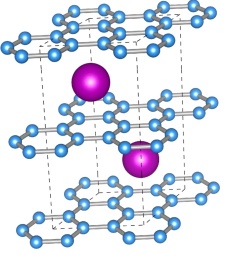Among many two-dimensional (2D) high TC superconductors, graphite intercalation compounds (GICs) are the most famous intercalation family, which are classified as typical electron-phonon mediated superconductors. We show unambiguous experimental facts that BaC6, the superconductivity of which has been missing for many years so far among various alkaline earth metal (Ca, Sr, and Ba) intercalted GICs, exhibits superconductivity at Tc = 65 mK. By adding this finding as the additional experimental point, a complete figure displaying the relationship between Tc and interlayer distance (d) for GICs is nowprovided, and their possible superconducting mechanisms raised so far are revisited. The present study settles a
long-running debate between theories and experiments on the superconductivity in the first stage GICs.
|
|
|
Home Help About Archive |
|
|
xxxx |
Superconductivity in the Graphite Intercalation Compound
|




